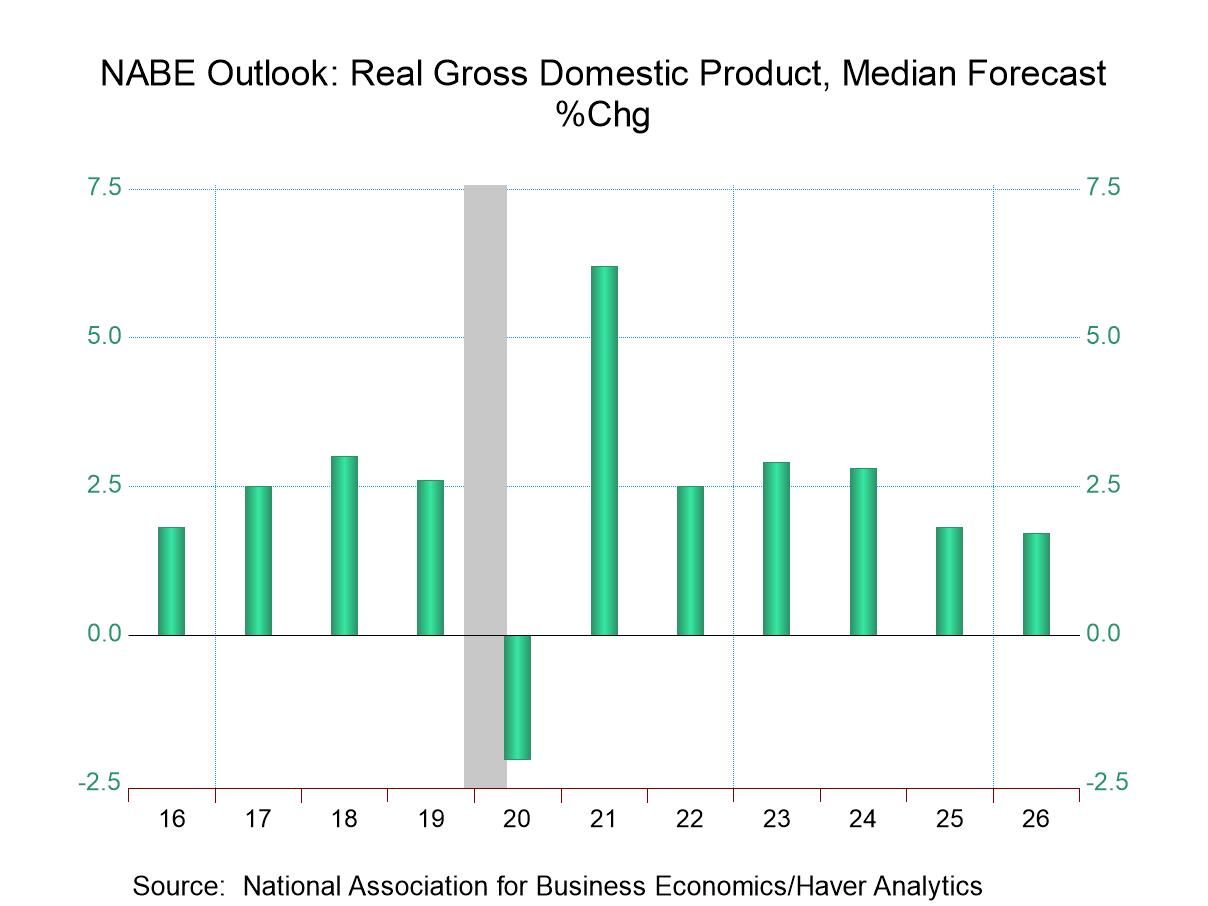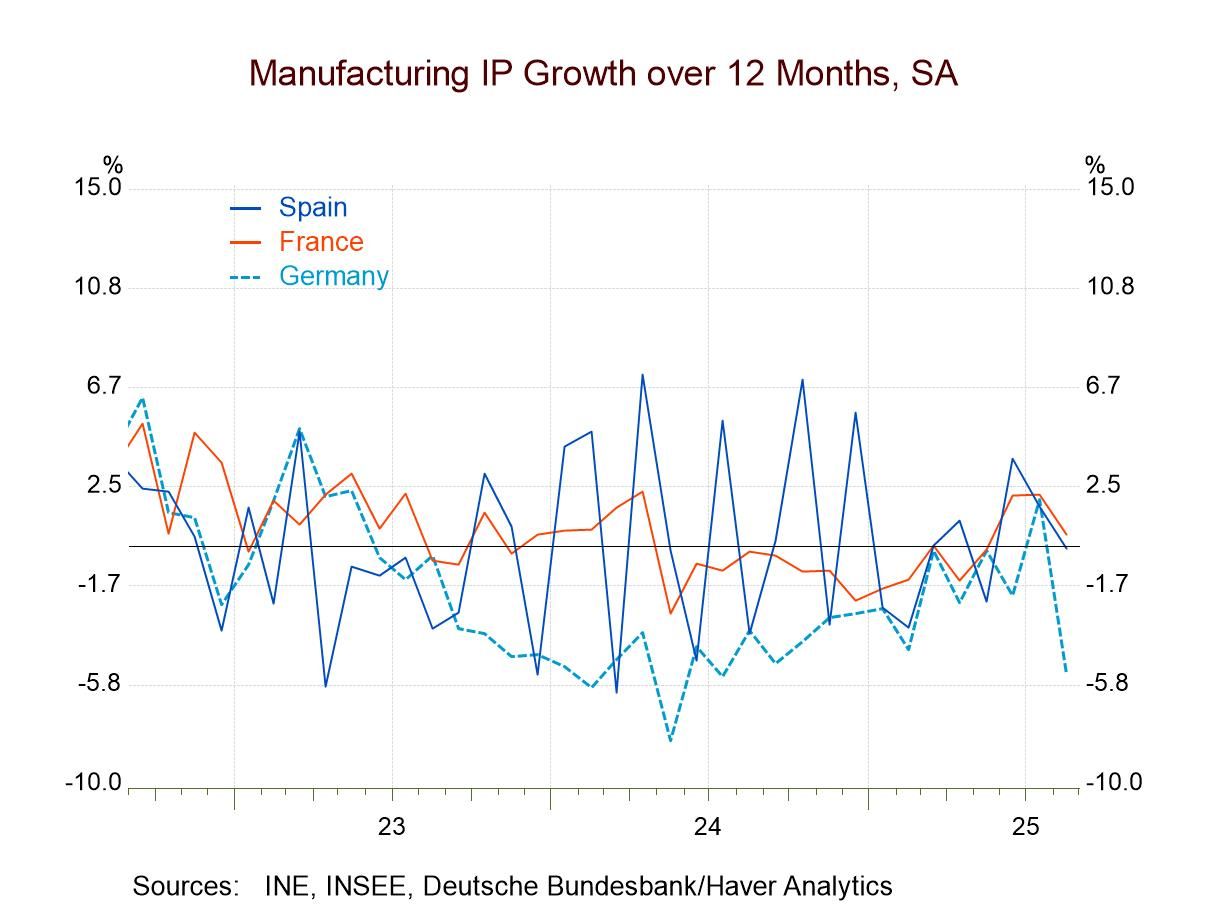 Global| Jun 01 2004
Global| Jun 01 2004ISM Factory Index Up Slightly
by:Tom Moeller
|in:Economy in Brief
Summary
The May Purchasing Managers Composite Index (PMI) released by the Institute of Supply Management rose slightly to 62.8 from 62.4 in April. Consensus expectations were for a decline to 61.5. During the last twenty years there has been [...]
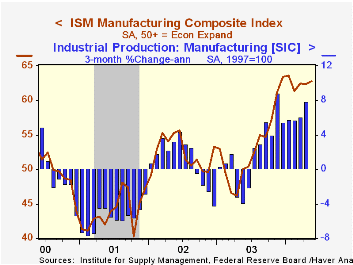
The May Purchasing Managers’ Composite Index (PMI) released by the Institute of Supply Management rose slightly to 62.8 from 62.4 in April. Consensus expectations were for a decline to 61.5.
During the last twenty years there has been a 70% correlation between the level of the Composite Index and the three month growth in factory sector industrial production.
Patterns amongst the component series again were mixed. Production fell to 64.8, reversing all of the April jump, and new orders fell for the fifth straight month. The separate index of export orders fell for the second month from a March high.
These declines were offset by a rise in the employment index to the highest level since 1973, a higher level of vendor performance and higher inventories.
The prices paid index fell slightly to a still high 86.0.
"What Investment Patterns across Equipment and Industries Tell Us about the Recent Investment Boom & Bust" from the Federal Reserve Bank of New York can be found here.
| ISM Manufacturing Survey | May | April | May '03 | 2003 | 2002 | 2001 |
|---|---|---|---|---|---|---|
| Composite Index | 62.8 | 62.4 | 50.0 | 53.3 | 52.4 | 43.9 |
| New Orders Index | 62.8 | 65.0 | 52.6 | 58.1 | 56.6 | 46.1 |
| Prices Paid Index (NSA) | 86.0 | 88.0 | 51.5 | 59.6 | 57.6 | 42.9 |
by Tom Moeller June 1, 2004
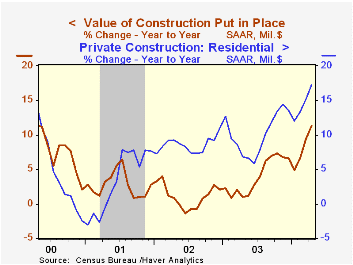
The total value of construction put in place surged another 1.3% in April following an upwardly revised 2.4% March gain. A 0.5% rise had been the Consensus expectation.
Private residential building activity rose 1.2% following a 1.1% March gain, revised from 0.7%. Residential building rose 1.2% as single family building rose 1.6% (23.7% y/y).
Nonresidential building rose for the third straight month (0.1% y/y) led by gains in the health care, education and commercial building categories.
Public construction added 1.7% led by another gain in spending on highways & streets (nearly one third of the value of public construction spending), up 22.0% y/y.
These more detailed categories represent the Census Bureau’s reclassification of construction activity into end-use groups. Finer detail is available for many of the categories; for instance, commercial construction is shown for Automotive sales and parking facilities, drugstores, building supply stores, and both commercial warehouses and mini-storage facilities. Note that start dates vary for some seasonally adjusted line items in 2000 and 2002 and that constant-dollar data are no longer computed.
| Construction Put-in-place | April | Mar | Y/Y | 2003 | 2002 | 2001 |
|---|---|---|---|---|---|---|
| Total | 1.3% | 2.4% | 11.3% | 4.0% | 1.1% | 2.7% |
| Private | 1.2% | 1.1% | 11.6% | 4.6% | -0.2% | 1.4% |
| Residential | 1.2% | 1.3% | 17.3% | 10.1% | 8.6% | 3.3% |
| Nonresidential | 1.3% | 0.7% | 0.1% | -5.5% | -13.0% | -1.3% |
| Public | 1.7% | 7.0% | 10.2% | 2.1% | 5.3% | 7.4% |
by Tom Moeller June 1, 2004
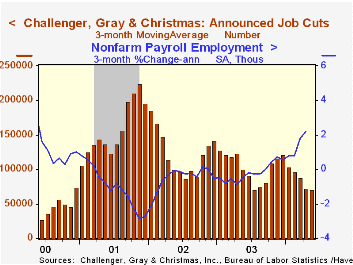
Challenger, Gray & Christmas reported that announced job cuts ticked 1.6% higher to 73,368 in May following a 6.1% m/m increase in April.
The three month moving average of job cut announcements fell to 71,195 (-28.9% y/y) due to sharp decline in layoffs in February and March.
During the last ten years there has been an 87% (inverse) correlation between the three month moving average of announced job cuts and the three month change payroll employment.
Job cut announcements differ from layoffs. Many are achieved through attrition, early retirement or just never occur.
| Challenger, Gray & Christmas | May | April | Y/Y | 2003 | 2002 | 2001 |
|---|---|---|---|---|---|---|
| Announced Job Cuts | 73,368 | 72,184 | 6.9% | 1,236,426 | 1,431,052 | 1,956,876 |
Tom Moeller
AuthorMore in Author Profile »Prior to joining Haver Analytics in 2000, Mr. Moeller worked as the Economist at Chancellor Capital Management from 1985 to 1999. There, he developed comprehensive economic forecasts and interpreted economic data for equity and fixed income portfolio managers. Also at Chancellor, Mr. Moeller worked as an equity analyst and was responsible for researching and rating companies in the economically sensitive automobile and housing industries for investment in Chancellor’s equity portfolio. Prior to joining Chancellor, Mr. Moeller was an Economist at Citibank from 1979 to 1984. He also analyzed pricing behavior in the metals industry for the Council on Wage and Price Stability in Washington, D.C. In 1999, Mr. Moeller received the award for most accurate forecast from the Forecasters' Club of New York. From 1990 to 1992 he was President of the New York Association for Business Economists. Mr. Moeller earned an M.B.A. in Finance from Fordham University, where he graduated in 1987. He holds a Bachelor of Arts in Economics from George Washington University.



